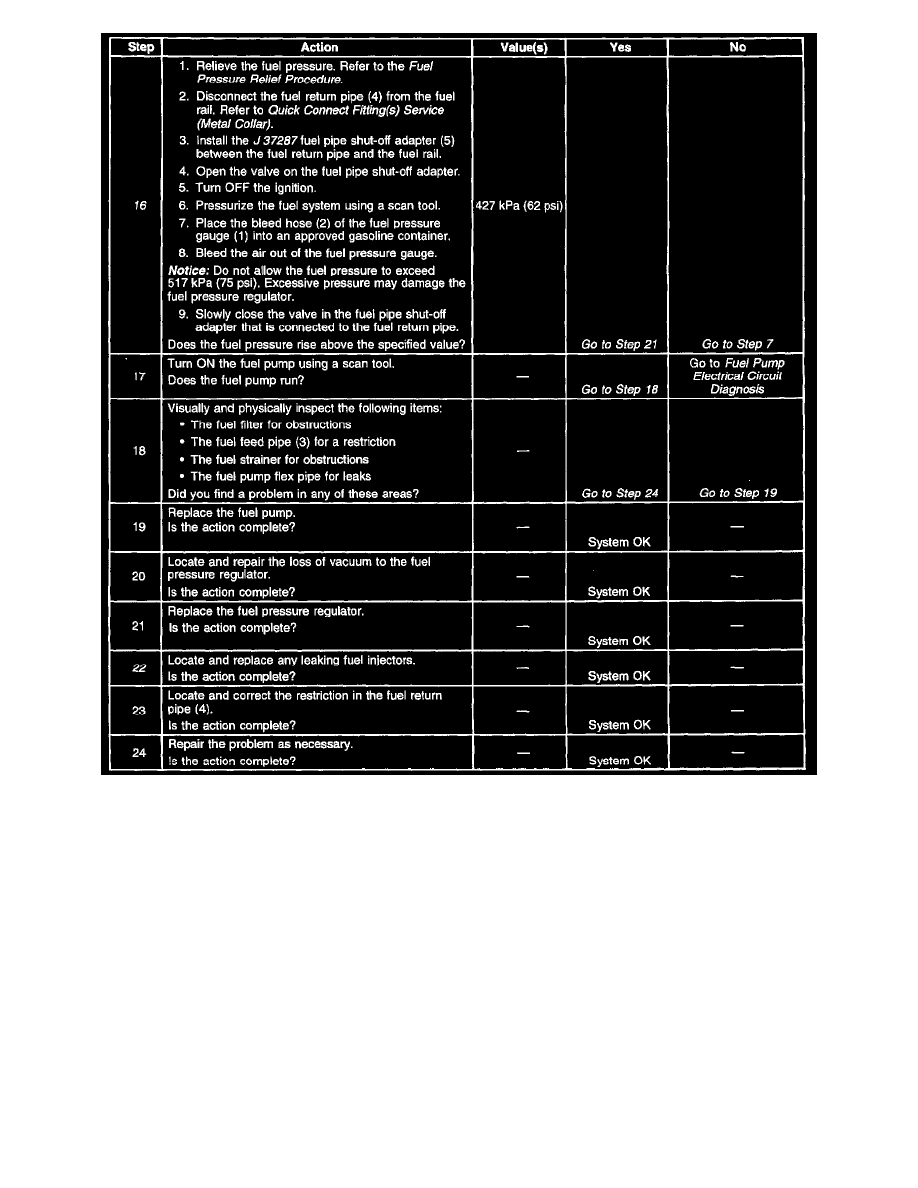K 2500 Yukon 4WD V8-6.0L VIN U (2000)

Diagnostic Chart (Part 3 Of 3)
CIRCUIT DESCRIPTION
When you turn ON the ignition switch, the Powertrain Control Module (PCM) turns ON the in-tank fuel pump. The in-tank fuel pump remains ON as
long as the engine is cranking or running and the PCM receives reference pulses. If there are no reference pulses, the PCM turns the in-tank fuel pump
OFF 2 seconds after the ignition switch is turned ON or 2 seconds after the engine stops running.
The electric fuel pump attaches to the fuel sender assembly inside the fuel tank. The in-tank fuel pump supplies fuel through an in-pipe fuel filter to the
fuel rail assembly. The fuel pump provides fuel at a pressure above the pressure needed by the fuel injectors. A fuel pressure regulator, attached to the
fuel rail, keeps the fuel available to the fuel injectors at a regulated pressure. Unused fuel returns to the fuel tank by a separate fuel return pipe.
TEST DESCRIPTION
The numbers below refer to the step numbers on the diagnostic table.
2. When the ignition switch is ON and the fuel pump is running, the fuel pressure indicated by the fuel pressure gauge should read 379-427 kPa
(55-62 psi). The spring pressure inside the fuel pressure regulator controls the fuel pressure.
3. A fuel system that drops more than 34 kPa (5 psi) in 10 minutes has a leak in one or more of the following areas:
^ The fuel pump check valve
^ The fuel pump flex pipe
^ The valve or valve seat within the fuel pressure regulator
